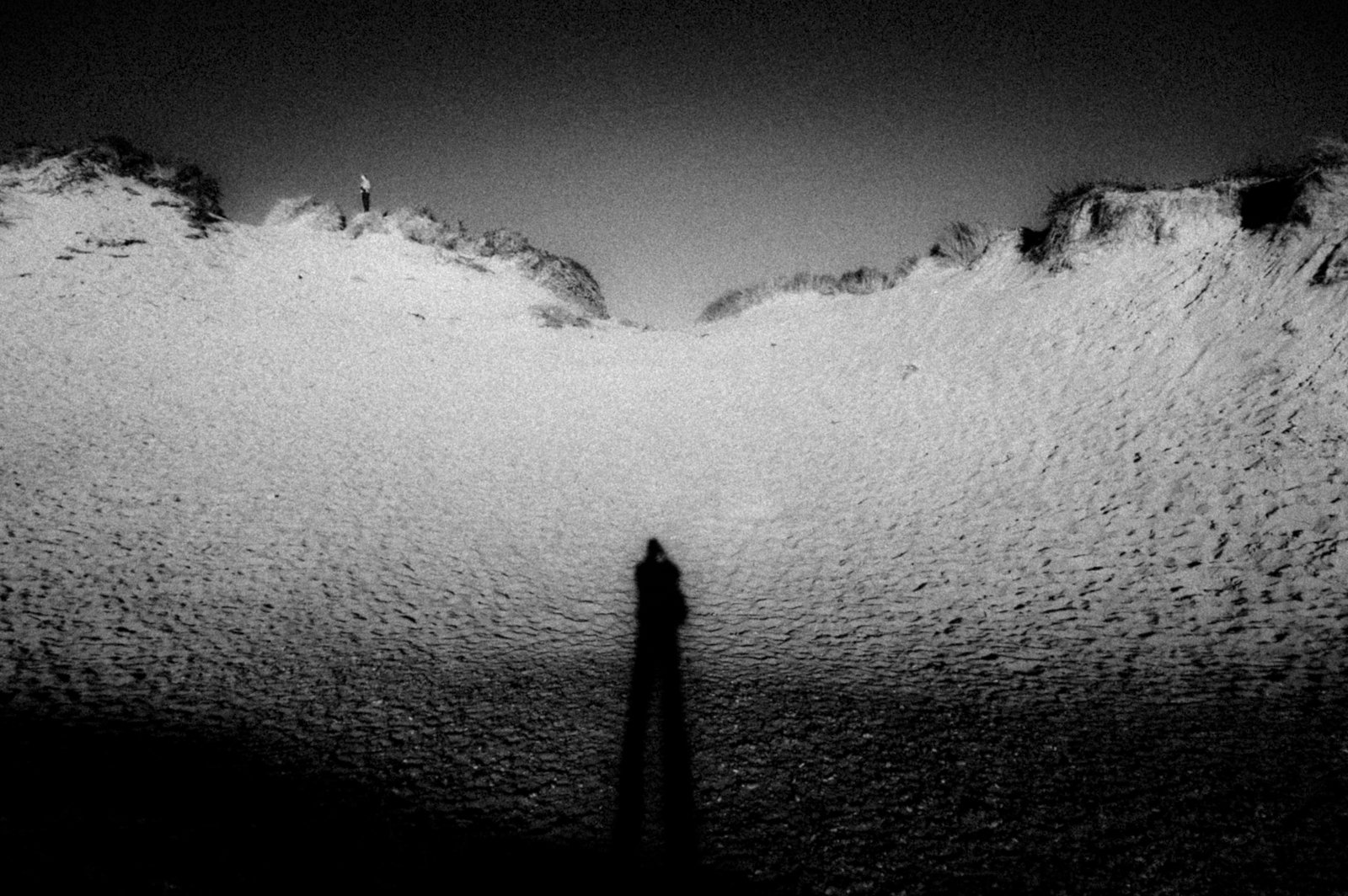Self portrait
Baie de Somme 25th may 2009

The self-portrait of a shadow is a paradox. It is not the face we expose, but an absence—a fleeting silhouette cast upon the ground. The shadow is a shifting sketch, elusive and intangible. The photographer withdraws, leaving behind a trace without detail, without a face, as if seeking to disappear within his own portrait.
Photographing one’s shadow is an embrace of the idea that we can never fully capture ourselves. The shadow escapes, distorts, stretches under the influence of light, becoming the reflection of a being always in motion, never fixed. It is a self-portrait without narcissism, where the essence lies not in what is shown but in what is left to be imagined. Where the face might seek to assert itself, the shadow fades away.
This photo is not a shout but a whisper. It is a way of saying “I am here,” while accepting that this “I” remains blurred, elusive. The shadow speaks to who we truly are: a transient being, anchored in time yet always vanishing into the next moment. It follows the contours of the body without revealing it, bending to the whims of light, much like the fleeting reality of our existence.There is a quiet wisdom in this practice. The shadow reminds us that what defines us is not always what we show to the world, but what we cannot show, what we carry within. Like a traveler moving at the edge of light, the photographer allows himself to be guided by the idea that the essential can only be glimpsed, never captured. The self-portrait of a shadow is not an exercise in vanity, but a tribute to that part of ourselves which remains always in the background, silent, revealed only in fragments by the play of light.